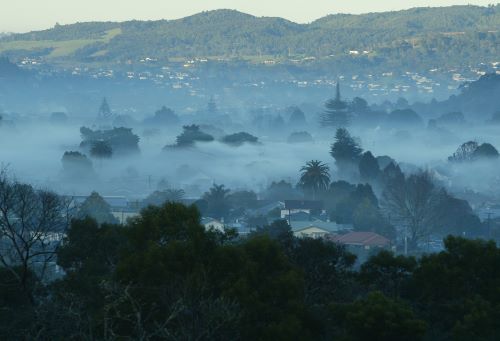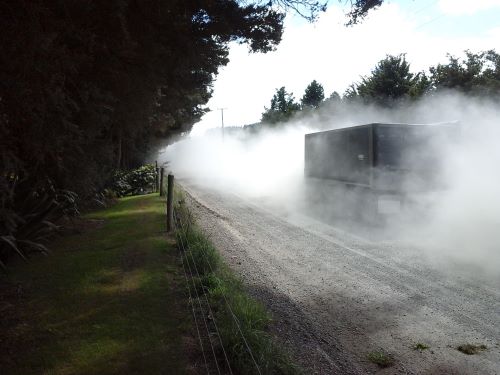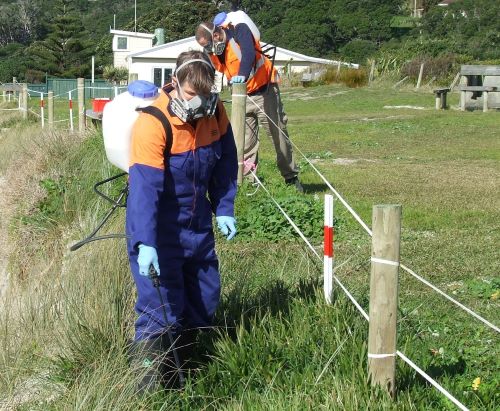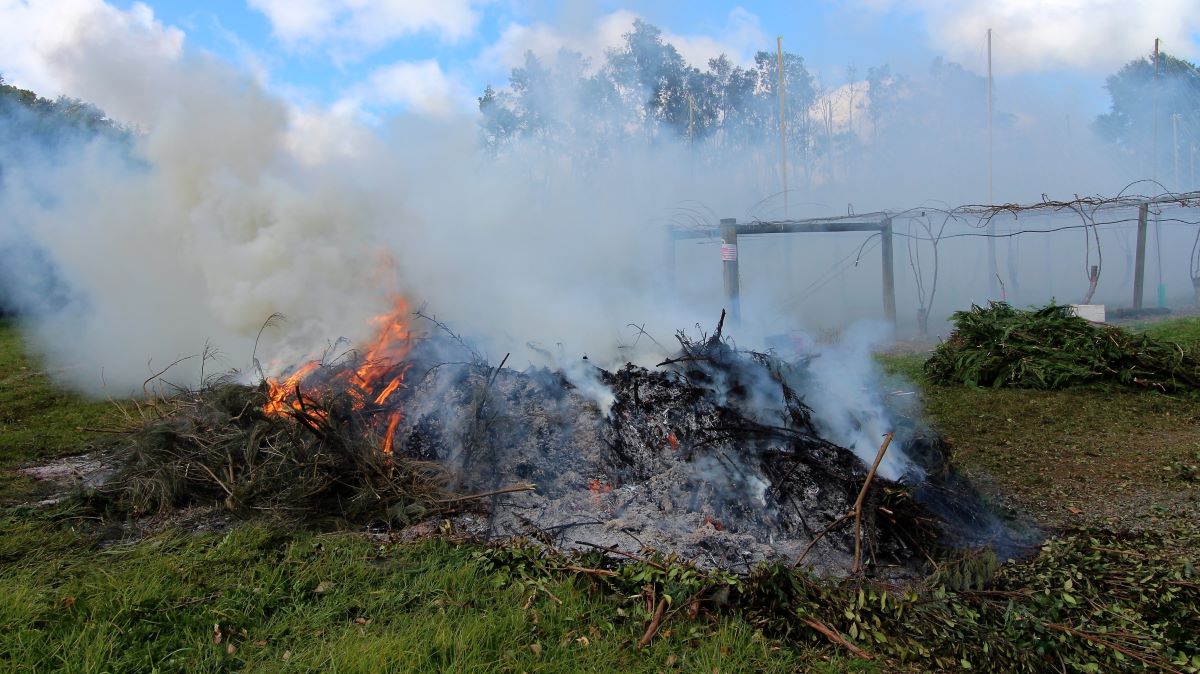Air quality
Everyday each person inhales about 14,000 litres of air. Air is an invisible gas layer that surrounds the earth, mainly made up of a mixture of oxygen and nitrogen. Air is essential for the health of humans and the environment. We all need clean air to survive. Here in Northland we’re known for our clear skies and fresh air. We tend to take it for granted when in fact we’re very fortunate that we can most often breathe easily and see the stars twinkling in our night sky.
Air quality in Northland
Our air quality is naturally high because:
- the south-westerly winds move the air around quickly
- our people are spread out across the region
- our vehicles are spread out across the region; and
- there’s not a lot of heavy industry in Northland.
The quality of air we breathe can degrade naturally – dust storms, volcanic eruptions, bush fires and pollen are among the factors that can lessen air quality. Human activities such as burning, industrial emissions, vehicle emissions, horticulture and agriculture can also contribute.
Air quality is influenced by meteorological conditions. Warm and windy weather favours better air quality than cool and calm conditions when contaminants may accumulate and increase to levels that can be harmful to human health.
Contamination is often evident as a haze that hangs in the air. This is especially common in winter where smog, (a mixture of fog and smoke) is mainly due to smoke from domestic wood burners and chimneys.
Northland’s air quality generally follows a seasonal trend, with better air quality observed during summer. An exception is dust, which is more of an issue during dry summer periods.
 Smog hangs over Whangārei City on a cold winter morning. (Photo: Northern Advocate).
Smog hangs over Whangārei City on a cold winter morning. (Photo: Northern Advocate).
What pollutes the air?
Put simply, air pollution is anything harmful in the air. Usually we don’t want it there because it affects our health or the environment in which we live. Poor air quality can have negative impacts on the agriculture, horticulture and tourism industries and this is bad for our region’s economic growth.
The regional council sets rules and regulations that are designed to help keep Northland’s air clean. This includes managing the most common causes of air pollution. In our region, these are:
- aerial spraying of agrichemicals and fertiliser
- dust nuisance from gravel roads – Northland has around 6,600kms of roads and around two-thirds of them are unsealed. Roads are looked after by the New Zealand Transport Agency and district councils
- backyard burning – smoke from outdoor fires
- discharge from industrial areas; and
- vehicle emissions.
More information about these activities is available online by clicking on the links above, or by picking up information from our regional council offices in Whangārei, Dargaville, Waipapa and Kaitaia.
 Dusty roads are a problem for the people who live close by and a problem for the environment.
Dusty roads are a problem for the people who live close by and a problem for the environment.
Find out more about dust nuisance and our recommended methods to stop the dust
The council is also involved in managing odour-related air quality issues that can result from activities such as waste disposal, wastewater treatment and disposal, dairy effluent ponds and natural putrefaction processes such as decay or rotting in organic matter.
 Before doing any spraying, talk to your neighbour and check the rules.
Before doing any spraying, talk to your neighbour and check the rules.
The Northland Regional Council’s role
Our role is to monitor air quality and work with our communities to keep our air clean and healthy. We know that:
- Burning and smoke nuisance are the most common air quality complaints to our Environmental Hotline
- Urban Whangārei – Northland’s most densely populated area – is the most likely place to exceed National Air Quality Standards for air quality during winter months
- In the last ten years, the only time national air quality standards weren’t met in Whangārei was on one occasion in March 2012
- There are more than 350 resource consents for discharge of contaminants to air in Northland, many of which are for small-scale sewage treatment plants and disposal facilities that require emissions controls to reduce odour
- We issue and monitor resource consents that control what industry and businesses can put into the air.
For more information, see the resource consents section
More about our work can be found in the Regional Air Quality Plan for Northland. This plan identifies Northland’s significant air quality issues and sets out current policies and rules to manage or protect our environment. It is being updated and the new policies and roles regarding air quality will become part of our proposed new Regional Plan.
 Monitoring air quality is the one of the regional council's roles.
Monitoring air quality is the one of the regional council's roles.
Contaminants (pollutants)
A few months ago, a person and a company were fined more than $50,000 for illegally burning contaminants from a demolition site that released noxious substances into the air. These contaminants comprised untreated wood, including plywood, medium density fibreboard, treated timber, painted wood, chipboard, plastic, metals and coated wire.
All of them have the potential to cause air pollution, which is bad because it smells, causes haze, damages buildings and plants, and can make people sick or even kill them.
Some air contaminants are natural - they come from dust, gases, smoke and ash from bush fires and volcanoes. Other natural air pollutants are ocean spray, pollen, mist, insect droppings and mould growth.
Some contaminants can be seen (such as smoke, ash, soot and dust) while others are most often invisible (exhaust fumes, gases and odours).
Modern rubbish usually comprises plastics containing toxic particles that pollute the air when burnt, so outdoor burning rules only allow untreated wood, paper, cardboard or vegetation to be burnt on open fires.
The regional council discourages people from burning rubbish in their backyards because of the air pollution caused, and because the smoke and fumes are often annoying to neighbours.
Major air pollutants – a pollutant is something in the air that is harmful to human health and the environment
| Pollutant | Source | What effect does it have? |
| Carbon Monoxide A colourless, odourless, tasteless and relatively inert gas which slowly converts to carbon dioxide. |
|
|
| Nitrogen Dioxide A reddish, brown, pungent, acidic gas. |
|
|
| Sulphur Dioxide A colourless, pungent, acidic gas which readily reacts in the air to form sulphuric acid and other compounds. It is usually oxidised in the air within a few days. |
|
|
|
PM10 (particulate matter that is smaller than 10 µm in size) |
|
|
What can you do?
- A lot of pollution comes from cars. You or your parents can help the environment by keeping the car well-tuned to reduce pollution from exhaust fumes. Vehicles should not be emitting blue, white or black smoke
- Get your chimney checked and cleaned regularly
- Stop backyard burning
- Burn only untreated wood on your home wood burner and operate it correctly. There should not be dark or smelly smoke coming out of your chimney
- Consider replacing the old fireplace or wood burner with a cleaner form of heating
- Recycle as much as you can. Re-use useful items, compost food and green waste for use in the garden and set up a worm farm
- Put what’s left out for collection or take it to a landfill
- Where road sealing is not an option, light watering is the best way to suppress dust in the short-term
- Use sprays with extreme caution and follow the rules.
 Burning vegetation causes thick harmful smoke. You can help by finding alternatives to backyard burning.
Burning vegetation causes thick harmful smoke. You can help by finding alternatives to backyard burning.
